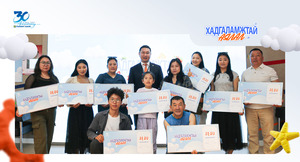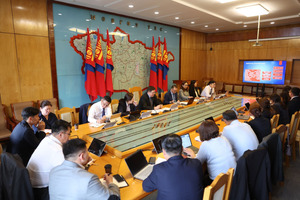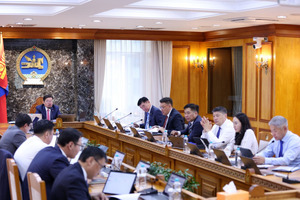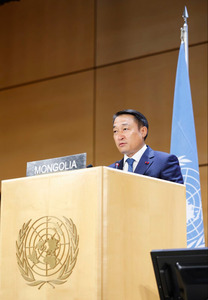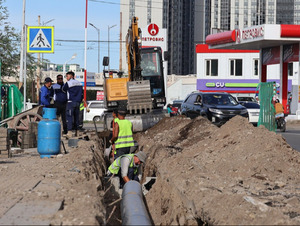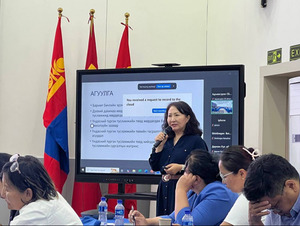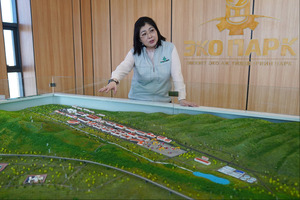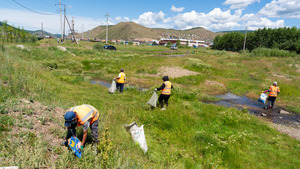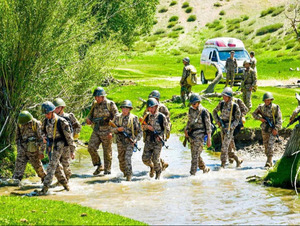Every day we can see and feel environmental changes and degradation caused by increased greenhouse gas and other pollutants due to rapid economic and industrial growth in these days. One of its clear indication is definitely global warming. We clarified from Dr. D.Dagvadorj, Special Envoy for Climate Change, Chairman of Climate Change Coordination Office of the Ministry of Environment and Green Development, about the current situation of climate change and its impacts in Mongolia, and also about government policies on adaptation to climate change and mitigation of greenhouse gas emissions.
-How is the real situation of climate change in Mongolia?
-According to the meteorological observations, the country’s annual mean temperatures have risen by 2.16°C since 1940 that is much higher than global average. While precipitation amount have decreased in Gobi desert areas of Mongolia during the last few decades. In addition, intensity and frequency of natural disasters such is drought and dzud (severe weather conditions in winter), strong wind and dust storms, heavy rains, floods, etc. are increasing. Scientists are warning that climate in Mongolia will continue to change dramatically during the 21st Century.
-How much these changes in climate will have impact in Mongolia?
-Because of its specific geographical and climatic conditions, Mongolia is likely to be more heavily influenced by global climate change. Climate change will have direct and serious impacts on the ecological systems and the natural resources as well as on almost all sectors of the national economy and all spheres of social life. As we all know, due to adverse impacts of climate change, permafrost and glaciers are melting, water reserves are shrinking, grasslands are degrading in Mongolia. These impacts cause economic losses and social problems.
-What is the government policy to solve climate change challenges and problems?
-Climate change response measures will help to address the inevitable need to adapt to climate change and to mitigate greenhouse gas emissions, in order to meet the requirements of Mongolia’s sustainable development strategies. The government policy on climate change should contribute and support the country’s goal to establish climate resilient and low carbon societies in Mongolia. In order to address challenges relevant to climate change, the State Great Khural (Parliament) of Mongolia approved the National Action Program on Climate Change (NAPCC) in 2011, which includes the national policy and strategy to tackle the adverse impacts of climate change and to mitigate greenhouse gas emissions.
-How can we adapt to climate change?
-Clearly, for a country which is very vulnerable to climate change, the formulation and implementation of a policy on adaptation to climate change is vital for the sustainable development of the country. The main goals of adaptation measures are to reduce the adverse effects caused by climate change and to create and strengthen adaptive capacities of vulnerable sectors and communities. For Mongolia, as a priority, adaptation measures should be implemented in sectors such as agriculture, grassland, water, forest, human health and natural disaster management. Implementation measures must consider factors related to legislation, institutional arrangements, finance, human resources, science and media, and must ensure coherence with other national and sectoral policies and programs.
-What is the country’s policy on mitigation of greenhouse gas emissions? Could you tell us some examples of ongoing projects and programs?
-Although total greenhouse gas emissions of Mongolia is almost negligible compared to other countries, NAPCC includes certain measures for reducing GHG emissions by sources and enhancing GHG removals by sinks. GHG mitigation measures and actions should be integrated with strategies and goals for improving energy and heat efficiency, increasing renewable energy shares in energy generation and introducing environmentally sound technologies in energy, transport, industry, agriculture and waste management sectors. The strategies for sustainable development and reduction of greenhouse gas emissions in the energy sector are mainly concentrated on increasing renewable and other clean energy use, improvement of efficiency in energy supply , introduction of clean coal technologies, and energy efficiency improvement in energy demand such as in energy consumption in buildings and industry. We have been implementing several projects, mainly renewable energy projects under the Clean Development Mechanism (CDM) of the Kyoto protocol. As of today, 5 projects were registered in the CDM Executive Board under the United Nations Framework Convention on Climate Change. For example, Clean Energy LLC concluded a trade agreement with Sweden Energy Agency to trade certified emission reductions which is going to be generated from the Wind power plant currently being built in the Tuv aimag. Salkhit Wind Park will produce clean power for 20 years and mitigate 3.7 million tons of CO2-eq during the project timeframe. Out of this, 50% or 630 thousand tons of emission reduction from its first seven years of operation will be transferred to Government of Sweden. During the upcoming celebration of World Environment Day on 5 June, 2013 the first block of the wind park is going to be opened. Also our first CDM projects, namely the Taishir and Durgun Hydropower plants, are in operation although not in full capacity. These are good examples of measures to decrease greenhouse gas emissions by using renewable energy sources.
In addition, the government of Mongolia and the government of Japan established the Low Carbon Development Partnership in January 2013 to implement together the Joint Crediting Mechanism in Mongolia. Within this partnership, we will implement joint projects to reduce greenhouse gas emissions in Mongolia through transfer and use of highly efficient, environmentally sound technologies and Japanese financial support.
-Is there any study that Mongolian government has conducted to estimate greenhouse gas emissions? Few years ago I heard that the greenhouse gas emissions of Mongolia is decreasing but there were words saying that it is rapidly increasing in last few years.
-As Mongolia joined the UN Framework Convention on Climate Change and Kyoto Protocol, we are obligated to estimate the national greenhouse gas inventories periodically using internationally approved guidelines and methodologies and report it to the convention secretariat. In compliance, Mongolia has conducted its greenhouse gas inventories for the period from 1990 to 2006. The main sources of greenhouse gas emissions are sectors such as energy, industry, transportation, waste and agriculture. From this study we can see that just in 2006 Mongolia had emitted about 16 Million tons of CO2-eq in total compared to 20 million tons in 1990. The main reason of decrease of greenhouse gas emissions is simply attributed to slowdown of economic development during the transition period. However, because of the rapid growth of economy in the past few years, now the greenhouse gas emissions are increasing significantly. Therefore, we need to take actions to reduce greenhouse gas emissions.
-I heard that any activities and measures reducing greenhouse gas emissions are being supported. How can private companies get involved in it?
-Efforts to reduce greenhouse gas emissions are going in two directions. First, to reduce emissions and second, to enhance carbon sequestration into sinks such as soils, grasslands and forests. In implementing projects and programs to reduce greenhouse gas emissions, the involvement of private companies and economic entities is very important. Therefore, any activities to introduce environmentally sound and green technologies in energy, transport, building and industry sectors as well as use of renewable energies will be supported within the international and domestic programs and initiatives. For example, the Low carbon development partnership established with Japan is aiming to promote emission reduction activities by supporting private companies through financial and technological assistance.
